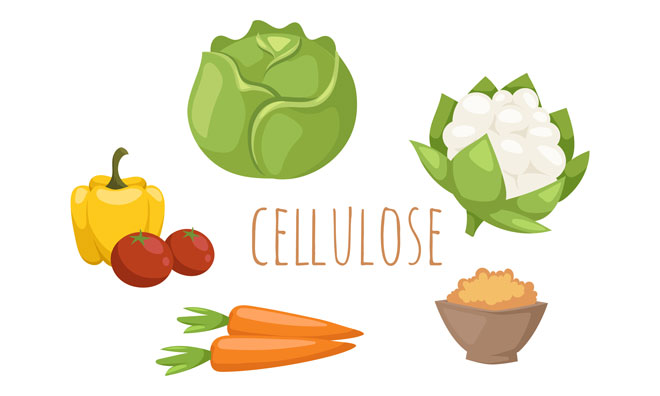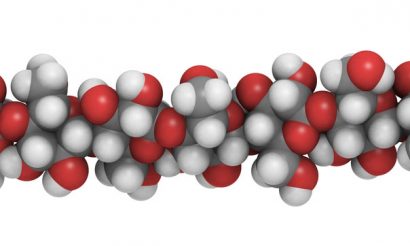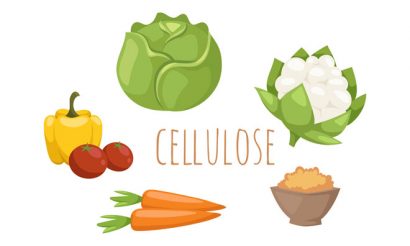Cellulose and food: a report by Vincenzo Calabrese
- Like
- Digg
- Del
- Tumblr
- VKontakte
- Buffer
- Love This
- Odnoklassniki
- Meneame
- Blogger
- Amazon
- Yahoo Mail
- Gmail
- AOL
- Newsvine
- HackerNews
- Evernote
- MySpace
- Mail.ru
- Viadeo
- Line
- Comments
- Yummly
- SMS
- Viber
- Telegram
- Subscribe
- Skype
- Facebook Messenger
- Kakao
- LiveJournal
- Yammer
- Edgar
- Fintel
- Mix
- Instapaper
- Copy Link
Posted: 31 August 2016 | Vincenzo Calabrese, Wageningen University | No comments yet
Vincenzo Calabrese, Wageningen University discusses the importance of cellulose to the food industry as a potential environmentally-friendly ‘natural’ optimiser…


In the last few decades cellulose has gained great importance in the food industry. Why did this happen and why is this interest still growing? The answer is provided not only by its unique molecular structure but also by its large availability.


Cellulose is a natural biopolymer, composed of repeating glucose units, linked b-1,4 which form long fibrils that assemble together to form microfibrils. The ordered assembly of these results in a high degree of crystallinity, which confers high mechanical strength and high water holding properties1.
Cellulose has important applications in many food formulations. Its unique structure provides the possibility of its application in a wide range of conditions, such as salt, pH and temperature2. Commonly, it is directly incorporated in the form of a powder3 and used as a thickening and stabilising agent and more in general as a texturiser. In addition, the thickening characteristic of this organic compound allows more air to be incorporated into products, such as whipped cream or ice cream. Additionally, the good water binding capacities of cellulose prevent synergies from food matrixes. Cellulose is not absorbed by the small intestine, therefore it constitutes a dietary fibre with no caloric value3.
Cellulose represents an excellent candidate for the increased use of eco-sustainable ingredients due to its abundance in plant biomass
For this reason, cellulose has been successfully used to reduce fat levels in hamburgers, cheese and fermented sausages4. Moreover, studies have recently shown that cellulose has the ability to stabilise oil in water emulsions5. The insolubility and the white-opaque colour of cellulose are the main limitations for its application in food products. In order to overcome these limitations, cellulose derivatives have been developed.


Beside the physio-chemical properties, cellulose provides a second advantage in terms of affordability. Cellulose is indeed the most abundant biopolymer, usually present in the cell wall of plants, fungi and algae as a framework component6. Agricultural residues also represent a great source of cellulose, although they are often left to waste.
A downside lies in its extraction process. When extracted from plant biomasses, harsh conditions are required due to the presence of other components, such as lignin, pectin and hemicelluloses, which can lead to unwanted effects when added to food products.
However, pure cellulose is also produced by some strains of micro-organisms that, using sugar mediums, are able to synthesise long strands of the biopolymer with a high degree of polymerisation, high tensile strength and tear resistance7. This is referred to as bacterial cellulose. Clearly, its main advantage is the high degree of purity which avoids any further extraction procedure.
To conclude?
Increased environmental awareness aims to use eco-sustainable ingredients and cellulose represents an excellent candidate due to its abundance in plant biomass. Cellulose is, therefore, a natural ingredient, which can lead to an optimisation of food products without modifying the ‘natural’ perception by consumers. Due to the complexity of food systems, the incorporation of cellulose still represents a big challenge for the food industry. Consequently, further fundamental and applicative researches are required to provide the boundaries for the usage of this biopolymer in food products.
_______________________________________________________________________
References
- Nijsse, J.; Velikov, K. P. (2013) Dispersions of Attractive Semi flexible Fiberlike Colloidal Particles from Bacterial Cellulose Micro fi brils
- Phillips, G. O. (2000) P, W. A. Handbook of hydrocolloids; Woodhead Publishing Limited
- Cezar, P.; Campagnol, B.; Alves, B.; Wagner, R.; Nascimento, N.; Aparecida, M.; Pollonio, R. (2012) Amorphous cellulose gel as a fat substitute in fermented sausages. MESC, 90 (1), 36–42
- Cho, S. S., & Prosky, L. (1999) Application of complex carbohydrates to food product fat mimetics’; In S. S. Cho, L. Prosky, &M. D., Ed.
- Paximada, P.; Tsouko, E.; Kopsahelis, N.; Koutinas, A. A.; Mandala, I. (2016) Food Hydrocolloids Bacterial cellulose as stabilizer of o / w emulsions. Food Hydrocoll. 53, 225–232
- Monserrate, E.; Leschine, S. B.; Canale-Parola (2001) E. Clostridium hungatei sp. nov., a mesophilic, N2-fixing cellulolytic bacterium isolated from soil. Int. J. Syst. Evol. Microbiol. 51 (1), 123–132
- Gardner, D. J.; Oporto, G. S.; Mills, R.; Azizi Samir (2008) M. A. S. Adhesion and surface issues in cellulose and nanocellulose. J. Adhes. Sci. Technol., 22 (5–6), 545–567.









